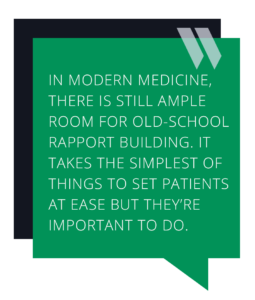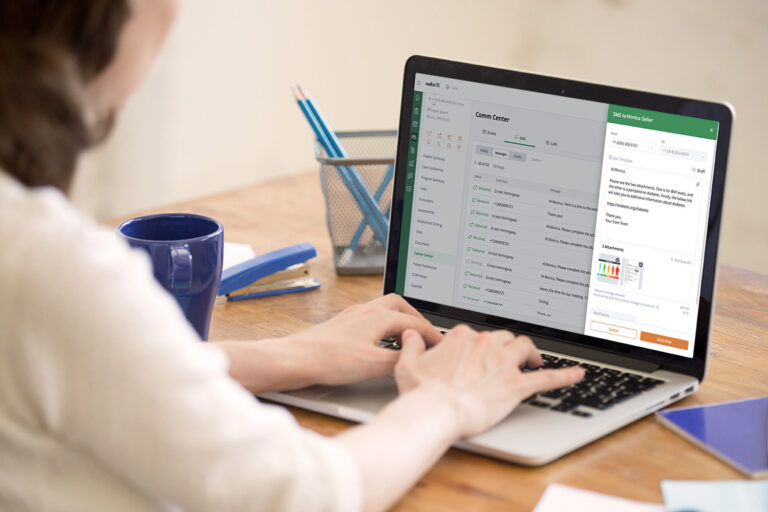When patients feel like connected, active participants in their care, things improve — for both the patients and to those of us providing care. In fact, as studies have shown, technology in the exam room or at the bedside can be a help if conditions are right.
But it can also be a hindrance, an impediment to making a meaningful connection with patients in the limited time you have with them. People are often not at their best — understandably so — when they come to see us; they’re sick, in pain, tired, frustrated and worried. Add screens and cumbersome data entry — plus a time crunch before the next patient you have to see — and it becomes harder to forge that human-to-human connection.
So what to do?
Stay old school
What did most of us first learn about bedside manner? How important it is to help patients feel seen and safe — so they share what’s needed to make an accurate diagnosis and formulate atreatment plan. In modern medicine, there is still ample room for old-school rapport building. It takes the simplest of things to set patients at ease but they’re important to do:
- Make eye contact and shake hands when they come in
- Don’t look at your watch or the clock; it signals impatience or inattention
- Sit down
- Let the patient talk without interruption

Be communicative
If you need to use technology — and let’s face it, most of us do — explain what you’re using it for and why to the patient. (In this respect, it’s no different than walking through a medical procedure before doing it). A light touch is fine: “I’m just going to check your chart and take some notes while we talk. This ensures our care team is always up to date on what’s happening with you.”
Play to your strengths
Do you find it hard to be stuck behind a large, fixed screen in the exam room? See if you can transition to a smaller tablet or even a mobile device and enjoy the feeling of being less tethered. As a plus, smaller devices feel more unobtrusive for patients. Have trouble focusing if you’re too mobile? Maybe a chair and a more traditional desktop is better for you, allowing you to concentrate on both tasks at hand: listening to the patient and recording information.
Be strategic about what tech you use
Look for a technology solution that facilitates a real care team approach — a hub-and-spoke model that puts patients at the center with every care team member able to contribute, review and evaluate what’s going on with that patient at any moment. We all know technology fatigue is real; the right tech should make it very simple to securely access information quickly so there’s no need to hunt for it in multiple places (or through myriad drop-down menus). That time saved means more time communicating eye-to-eye with the patient in front of you.
And that technology should make it simpler to stay in touch with patients through multiple modern communication mechanisms — whether it’s text, email, video chat or in-person visits. The option to regularly and easily communicate with your care team is also a check in the “win” column for patients when it comes to technology’s use in healthcare.
Keep your eyes and ears continually open
Technology changes all the time; what was the standard five years ago won’t be the standard five years from now. Artificial intelligence is now being explored — a concept called ambient clinical intelligence, for example, will make computers in the exam room obsolete through capturing patient information behind the scenes using AI, voice, biometrics and natural language processing. Imagine what insights can be unlocked using machine learning to augment our own diagnostic determinations.
How are you using technology for exams today? And how would you like to?
About the Author:
Dr. Rawlinson is an entrepreneurial physician executive, strategic leader, and digital healthcare product innovator. He is passionate about creating digital tools and new delivery models that reduce waste and inefficiency, improve quality, and drive improved performance and satisfaction. Dr. Rawlinson volunteers for The Maven Project and Rotacare Bay Area. He tweets @CMIO. He is an avid road cyclist and a big fan of Manchester City FC in the English Premier League!



